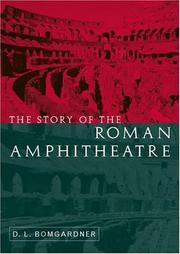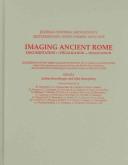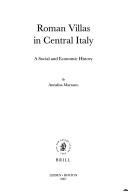| Listing 1 - 10 of 11 | << page >> |
Sort by
|
Book
ISBN: 2701304245 9782701304243 Year: 1981 Publisher: Paris: Berger-Levrault,
Abstract | Keywords | Export | Availability | Bookmark
 Loading...
Loading...Choose an application
- Reference Manager
- EndNote
- RefWorks (Direct export to RefWorks)
Architecture and society --- Vernacular architecture --- Architecture et société --- Architecture vernaculaire --- Nepal --- -Vernacular architecture --- -Architecture, Anonymous --- Architecture, Indigenous --- Architecture, Vernacular --- Folk architecture --- Indigenous architecture --- Traditional architecture --- Architecture --- Architecture and sociology --- Society and architecture --- Sociology and architecture --- Social aspects --- Human factors --- -Architecture and society --- Architecture et société --- Architecture, Anonymous --- Architecture and society - Nepal - Panaoti --- Vernacular architecture - Nepal - Panaoti
Book
ISBN: 2080109588 9782080109583 Year: 1989 Publisher: Paris : Flammarion,
Abstract | Keywords | Export | Availability | Bookmark
 Loading...
Loading...Choose an application
- Reference Manager
- EndNote
- RefWorks (Direct export to RefWorks)
Etude en profondeur de l'architecture de la salle de théâtre à l'italienne.
Theaters. --- Interior architecture. --- Architecture and society. --- Théâtres --- Architecture intérieure --- Architecture et société --- 78.77.0 --- Théâtres, architecture : théâtres à l'italienne --- Opéras --- Architecture théâtrale --- Histoire --- Europe
Book
ISBN: 2705306781 Year: 1992 Volume: 143 Publisher: Paris : Geuthner,
Abstract | Keywords | Export | Availability | Bookmark
 Loading...
Loading...Choose an application
- Reference Manager
- EndNote
- RefWorks (Direct export to RefWorks)
Architecture and society --- -Architecture and society --- -Architecture, Assyro-Babylonian --- Architecture, Domestic --- -Architecture, Domestic --- -Architecture, Rural --- Domestic architecture --- Home design --- Houses --- One-family houses --- Residences --- Rural architecture --- Villas --- Architecture --- Dwellings --- Assyro-Babylonian architecture --- Architecture and sociology --- Society and architecture --- Sociology and architecture --- Social aspects --- Human factors --- Architecture, Assyro-Babylonian. --- Architecture [Assyro-Babylonian ] --- Architecture assyro-babylonienne --- Architectuur [Assyrisch-Babylonische ] --- Beschaving [Assyrisch-Babylonische ] --- Civilisation assyro-babylonienne --- Civilization [Assyro-Babylonian ] --- Architecture, Assyro-Babylonian --- Architecture, Rural --- Architecture [Domestic ] --- Assyria --- Babylonia --- Architecture domestique

ISBN: 0415301858 0415165938 020327122X 9780203271223 9780415165938 0203187989 9780203187982 Year: 2000 Publisher: London ; New York Routledge
Abstract | Keywords | Export | Availability | Bookmark
 Loading...
Loading...Choose an application
- Reference Manager
- EndNote
- RefWorks (Direct export to RefWorks)
937 --- Amphitheaters --- -Architecture and society --- -937 Geschiedenis van Rome tot 476 --- Geschiedenis van Rome tot 476 --- Architecture --- Architecture and sociology --- Society and architecture --- Sociology and architecture --- Coliseums --- Theaters --- Outdoor concert facilities --- Social aspects --- Human factors --- Amphithéâtres --- -Geschiedenis van Rome tot 476 --- 937 Geschiedenis van Rome tot 476 --- Amphithéâtres --- Architecture and society --- -Architecture --- Architecture et société --- Rome --- 937 History of ancient Rome (to 476 AD) --- History of ancient Rome (to 476 AD) --- -Amphitheaters

ISBN: 188782961X 9781887829618 Year: 2006 Volume: 61 Publisher: Portsmouth Journal of Roman Archaeology
Abstract | Keywords | Export | Availability | Bookmark
 Loading...
Loading...Choose an application
- Reference Manager
- EndNote
- RefWorks (Direct export to RefWorks)
Architecture, Roman --- Architecture, Classical --- Architecture and society --- Architecture --- Architecture, Western (Western countries) --- Building design --- Buildings --- Construction --- Western architecture (Western countries) --- Art --- Building --- Roman architecture --- Classical architecture --- Classical antiquities --- Architecture and sociology --- Society and architecture --- Sociology and architecture --- Design and construction --- Social aspects --- Human factors --- Architecture, Primitive
Book
ISBN: 3205088549 Year: 1985 Publisher: Wien : H. Böhlau,
Abstract | Keywords | Export | Availability | Bookmark
 Loading...
Loading...Choose an application
- Reference Manager
- EndNote
- RefWorks (Direct export to RefWorks)
Architecture --- Architecture and society --- Symbolism in architecture --- Architecture et société --- Symbolisme en architecture --- History --- Histoire --- Symbolism in architecture. --- Architecture et société --- Architectural symbolism --- Signs and symbols in architecture --- Architecture, Classical --- Architecture and sociology --- Society and architecture --- Sociology and architecture --- Social aspects --- Human factors

ISBN: 9789004160378 900416037X 9786611921637 1281921637 9047421221 9789047421221 9781281921635 661192163X Year: 2007 Volume: v. 30 Publisher: Leiden Boston Brill
Abstract | Keywords | Export | Availability | Bookmark
 Loading...
Loading...Choose an application
- Reference Manager
- EndNote
- RefWorks (Direct export to RefWorks)
This volume, which was awarded Honorable Mention and a Silver Medal from the Premio Romanistico Internationazionale Gérard Boulvert, investigates the socio-economic role of elite villas in Roman Central Italy drawing on both documentary sources and material evidence. Through the composite picture emerging from the juxtaposition of literary texts and archaeological evidence, the book traces elite ideological attitudes and economic behavior, caught between what was morally acceptable and the desire to invest capital intelligently. The analysis of the biases affecting the application of modern historiographical models to the interpretation of the archaeology frames the discussion on the identification of slave quarters in villas and the putative second century crisis of the Italian economy. The book brings an innovative perspective to the debate on the villa-system and the decline of villas in the imperial period.
Architecture and society --- Architecture, Domestic --- Italy, Central --- Economic conditions --- History. --- Antiquities, Roman. --- Economic conditions. --- 307.760937 --- Social sciences Urban communities Ancient Italy --- Architecture domestique --- Architecture et société --- Italie centrale --- Antiquities, Roman --- Conditions économiques --- Antiquités romaines --- Architecture, Rural --- Domestic architecture --- Home design --- Houses --- One-family houses --- Residences --- Rural architecture --- Villas --- Architecture --- Dwellings --- Architecture and sociology --- Society and architecture --- Sociology and architecture --- Social aspects --- Human factors --- Central Italy --- Economische aspecten --- Sociale aspecten. --- Villa's. --- Midden-Italië.

ISBN: 0824828585 0824829530 9780824828585 9780824829537 Year: 2005 Publisher: Honolulu : Beijing : New York : University of Hawaii Press ; China Architecture and Building Press ; China Institute in America,
Abstract | Keywords | Export | Availability | Bookmark
 Loading...
Loading...Choose an application
- Reference Manager
- EndNote
- RefWorks (Direct export to RefWorks)
Architecture, Domestic --- Vernacular architecture --- Architecture and society --- Architecture --- Symbolism in architecture --- Architecture domestique --- Architecture vernaculaire --- Architecture et société --- Symbolisme en architecture --- Human factors --- Facteurs humains --- S17/1610 --- S13A/0405 --- S17/1630 --- S11/0700 --- China: Art and archaeology--Civil architecture --- China: Religion--Fengshui, geomancy --- China: Art and archaeology--Gardens --- China: Social sciences--Clan and family: general and before 1949 (incl. names, clan rules) --- Architecture et société --- Architectural symbolism --- Signs and symbols in architecture --- Architecture, Western (Western countries) --- Building design --- Buildings --- Construction --- Western architecture (Western countries) --- Art --- Building --- Architecture and sociology --- Society and architecture --- Sociology and architecture --- Design and construction --- Social aspects --- Architecture, Primitive
Book
ISBN: 2870090773 9782870090770 Year: 1997 Volume: vol *105 Publisher: Liège Pierre Mardaga
Abstract | Keywords | Export | Availability | Bookmark
 Loading...
Loading...Choose an application
- Reference Manager
- EndNote
- RefWorks (Direct export to RefWorks)
Dans ce brillant exposé, le professeur Norberg-Schulz propose une façon radicalement nouvelle de regarder l'architecture occidentale. Prenant comme prémisse l'utilisation de l'architecture par l'homme en tant que moyen symbolique pour apporter ordre et signification dans les relations entre lui-même et son environnement, il passe en revue toutes les époques principales de l'art occidental, de l'Egypte Ancienne à ce jour, examinant soigneusement les principales réalisations de la construction dans le contexte des implantations et des villes dans lesquelles elles ont été intégrées. Il en ressort que style et organisation ne sont pas de purs accidents historiques. Il montre que l'architecture de différentes périodes culturelles est, dans chaque cas, l'expression physique des croyances religieuses et philosophiques régnantes. En tant que tels, les bâtiments qui ont occupé des situations-clés dans la communauté - temples, églises, palais et lieux de réunions publiques - fournissent, par leur structure, la sécurité spirituelle essentielle à l'homme pour se sentir intégré dans ce monde. La maison privée aussi a reflété la conception en cours de l'homme, de sa place dans le temps et l'espace. Contre cet arrière-plan, "La signification dans l'architecture occidentale" apporte des aperçus précieux dans la crise où se trouve l'architecture contemporaine où la disparition de telles croyances est manifeste dans le manque d'unité des stèles de construction. Bien plus stimulant que l'exposé ordinaire, et richement illustré de 556 photographies, cartes et plans, "La signification dans l'architecture occidentale" offre une splendide introduction aux principaux développements de la construction et de l'urbanisation de l'Occident. Elle apporte également une contribution exceptionnelle à la fois à l'histoire d el'art et à la pensée existentielle appliquée.
Architecture --- Bouwkunst --- Symbolisme en architecture --- Architecture et histoire --- Facteurs humains --- Aspect social --- Teaching --- functionalism --- architectural theory --- Verlichting 1 --- architectonics --- Baroque --- Renaissance-Baroque architecture styles --- Mannerist [Renaissance-Baroque style] --- Renaissance --- Romanesque --- architecture [discipline] --- Gothic [Medieval] --- anno 1200-1499 --- anno 1300-1399 --- anno 1500-1599 --- anno 1100-1199 --- anno 1400-1499 --- anno 1000-1099 --- Rome --- Egypt --- Greece --- kunstfilosofie --- architectuur --- kunstgeschiedenis --- architectuurtekeningen --- philosophy of art --- architectural drawings [visual works] --- art history --- #TCBA --- #TCBA 72.01 Architectuuresthetica, -theorie --- Architectuurtheorie ; iconologie ; betekenis --- 72.01 --- Architectuur ; theorie, filosofie, esthetica --- Histoire de l'architecture --- Panorama mondial --- Architecture and society --- History. --- Symbolism in architecture --- Architecture et société --- Histoire --- Architectuur --- bouwtekeningen --- architectuur [vakgebied] --- architectuurtheorie --- Symbolisme en architecture. --- Architecture et histoire. --- Facteurs humains. --- Architectuur. --- architectuur [vakgebied]. --- architectuur. --- architectuurtekeningen. --- architectuurtheorie. --- bouwtekeningen. --- kunstfilosofie. --- kunstgeschiedenis. --- 710 --- symboles --- architecture --- bouwkunst
Book
ISBN: 9789058677990 9058677990 Year: 2010 Publisher: Leuven : Universitaire pers,
Abstract | Keywords | Export | Availability | Bookmark
 Loading...
Loading...Choose an application
- Reference Manager
- EndNote
- RefWorks (Direct export to RefWorks)
architectuur --- Architecture --- Sociology of environment --- architecture [discipline] --- anno 1940-1949 --- anno 1950-1959 --- Belgium --- Architecture and society --- Interior architecture --- Architecture, Domestic --- Housing --- Architecture et société --- Architecture intérieure --- Architecture domestique --- Logement --- History --- Histoire --- wonen --- woningbeleid --- Wooncultuur --- woning --- 1945 - 1958 --- België --- Logement social --- Academic collection --- 72.038(493) --- 72.01 --- Wonen ; woonvoorlichting ; België ; 1945-1958 --- Wooncultuur ; naoorlogse ; België ; 20ste eeuw --- Wederopbouw --- Woonmodellen --- Meubelkunst ; Formes Nouvelles en Museum voor Sierkunst Gent --- Van Der Meeren, Willy --- De Mey, Jos --- De Coene ; Kunstwerkstede Gebroeders De Coene --- 728.036 --- 728.03 --- 747.03 --- 351.778.5 --- C3 --- woningbouw --- België [land - BE] --- 20ste eeuw (x) --- 72 --- woningen --- architectuur 20e eeuw --- wederopbouw --- sociale meubelkunst --- 643 --- 72.036 <493> --- 728.1 --- #SBIB:316.334.5U10 --- #SBIB:949.3H2 --- 749 <493> --- Architectuurgeschiedenis ; 1950 - 2000 ; België --- Architectuur ; theorie, filosofie, esthetica --- Twintigste eeuw (woningbouw) --- 20ste eeuw (woningbouw) --- Wonen (geschiedenis) --- Woningbouw (geschiedenis) --- Interieurarchitectuur (geschiedenis) --- Woonbeleid --- Kunst en cultuur --- architectuur algemeen, architectuurtheorie, wonen --- The home. The dwelling --- Architectuurtheorie. Bouwprincipes. Esthetica van de bouwkunst. Filosofie van de bouwkunst --- Moderne bouwkunst. Architectuur van de 20e eeuw--België --- Woonhuizen. Woningbouw (algemeen) --- Sociologie van stad en platteland: wonen en huisvesting --- Economische en sociale geschiedenis van België --- Meubelkunst--België --- 749 <493> Meubelkunst--België --- 728.1 Woonhuizen. Woningbouw (algemeen) --- 72.036 <493> Moderne bouwkunst. Architectuur van de 20e eeuw--België --- 72.01 Architectuurtheorie. Bouwprincipes. Esthetica van de bouwkunst. Filosofie van de bouwkunst --- 643 The home. The dwelling --- Architecture et société --- Architecture intérieure --- 1945-1958 --- Architecture [Domestic ] --- 72.01 Theory and philosophy of architecture. Principles of design, proportion, optical effect --- Theory and philosophy of architecture. Principles of design, proportion, optical effect --- wooncultuur --- Private houses --- 1945 - 1958. --- België. --- culturele antropologie
| Listing 1 - 10 of 11 | << page >> |
Sort by
|

 Search
Search Feedback
Feedback About UniCat
About UniCat  Help
Help News
News